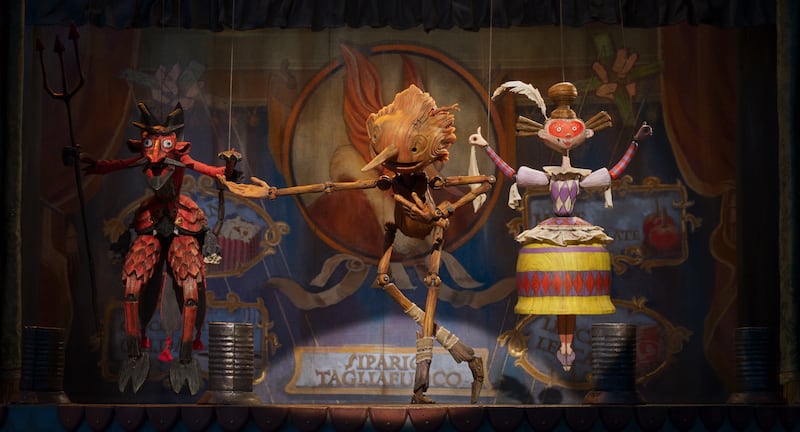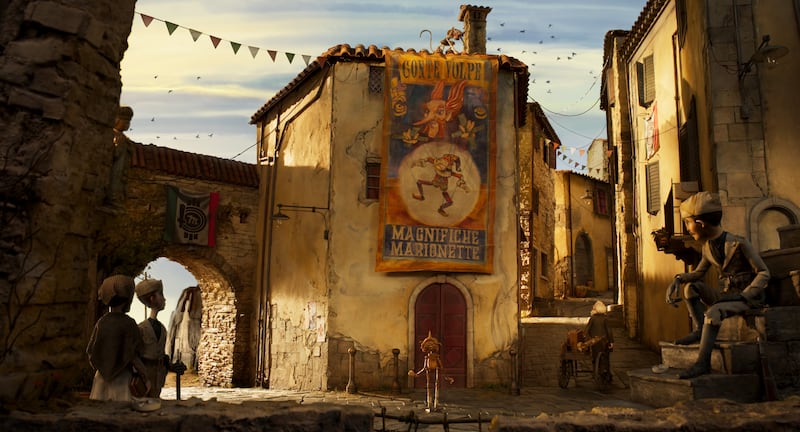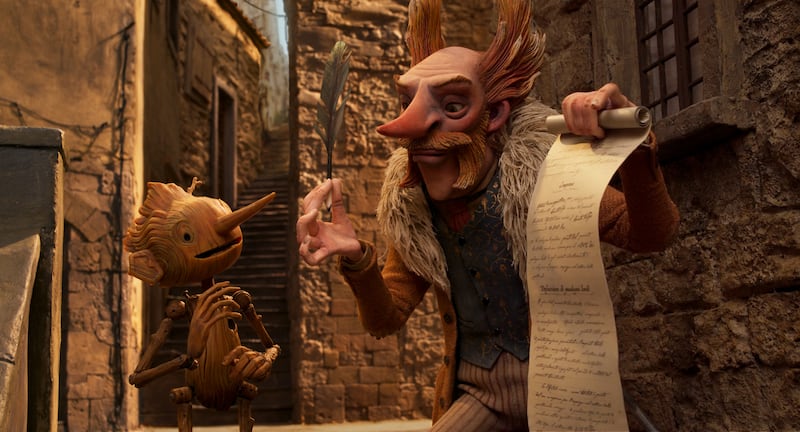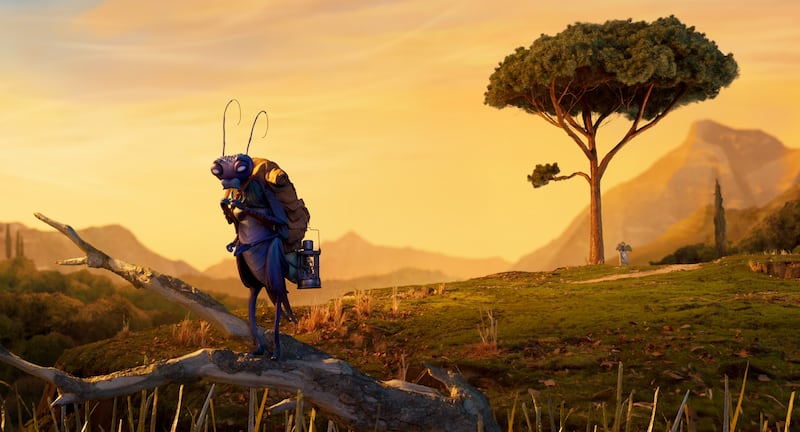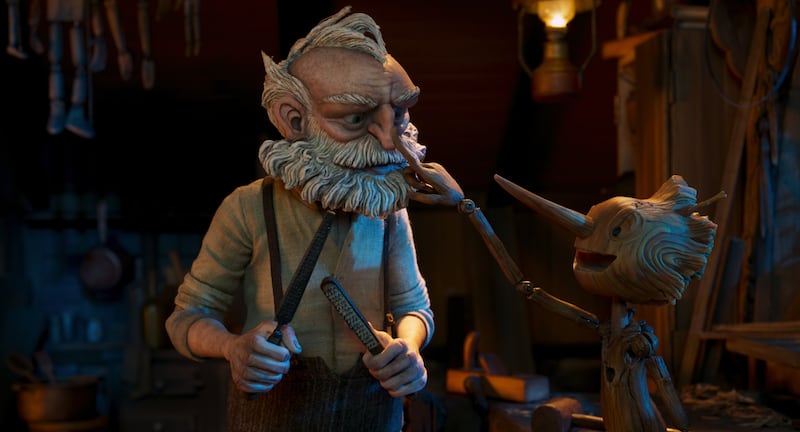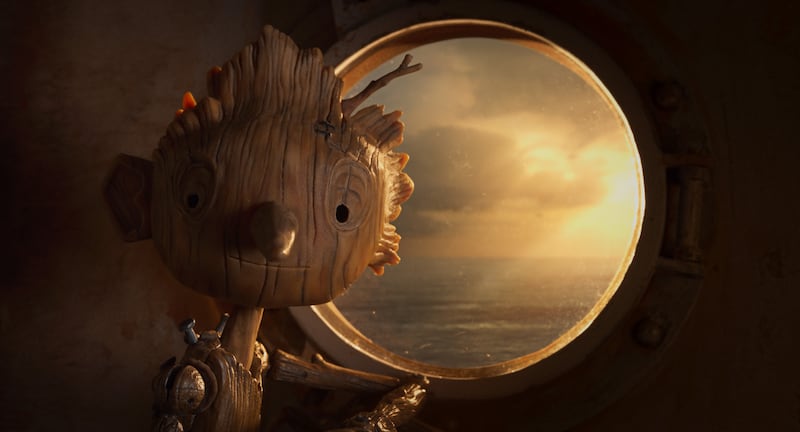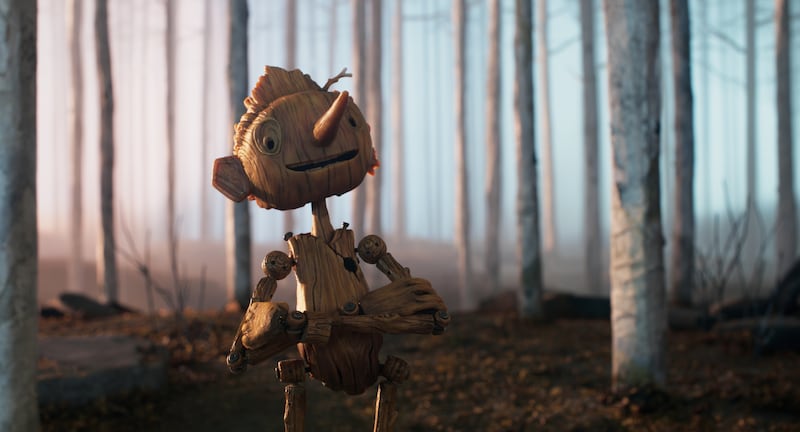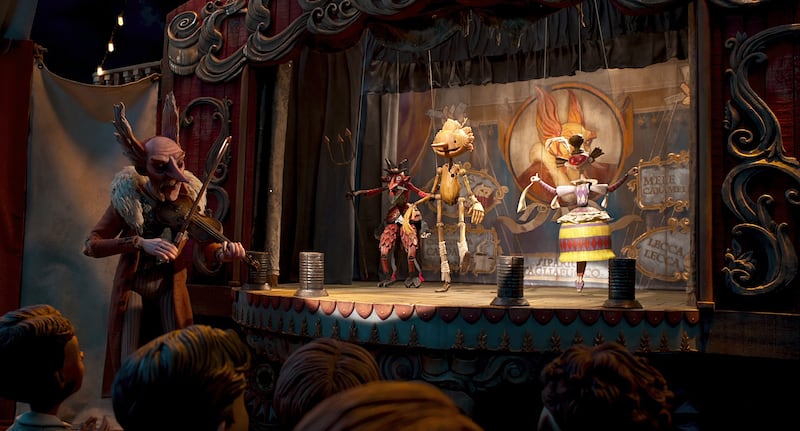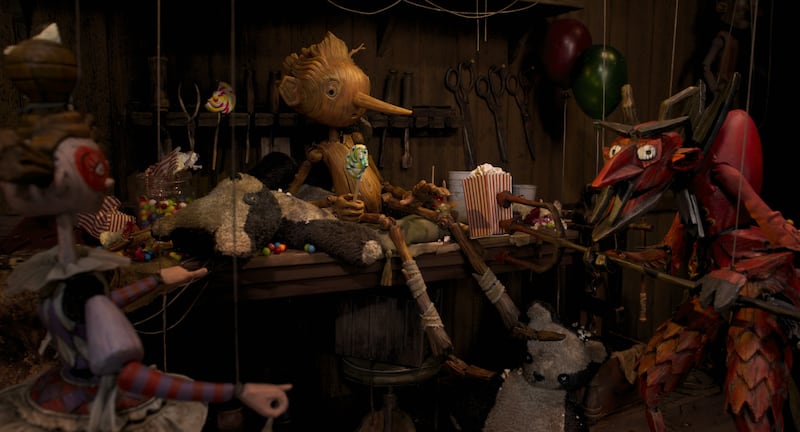Thanks to the 1940 Disney animated classic, the story of Pinocchio, the wooden puppet who comes to life and dreams of becoming a real boy, has become one of the most famous in the history of cinema.
More than a decade ago, Guillermo del Toro decided that it was time to tell his own version of the tale. But when he first took his proposed incarnation of Pinocchio out to studios, they balked at the idea of his dark take.
“We were turned down everywhere,” says Matthew Robbins, who wrote the first few drafts of Pinocchio and shares a co-writer credit on it with del Toro. “The Disney imprimatur was so severe that our version took studios by surprise, to put it mildly. Then there was the issue of cost. Because this is not a cheap process and Guillermo is very demanding about how he wanted to make it in stop motion. He wouldn’t compromise on that.”
Del Toro was so stubborn about his version because of how much he insisted on honoring the original source material, Carlo Collodi’s The Adventures Of Pinocchio, which was initially released in 1883. There was one change that del Toro did want to make, though. He wanted to set Pinocchio in 1930s fascist Italy so that he could examine the themes of the novel in an even darker and more terrifying manner.
“Very few people have taken the trouble, or have the interest, to go and read the original story,” adds Robbins. “I did a lot of reading — and not only of the original books. I read about Collodi, which wasn't even his real name. It’s shocking how the Disney version simplifies a story about politics, fascism, and how corrupt the adult world is. We wanted to show the chaotic, liberating spirit of this little puppet, who is loving but irresponsible and is instinctively rebellious against all corruption.”
But with studios unwilling to take a chance on del Toro and Robbins's version, Pinocchio was put to “the bottom drawer for quite a few years,” says Robbins. That was until October 2018, when it was suddenly announced that Netflix had agreed to del Toro’s vision, and were going to finance it.
The resulting film features Gregory Mann voicing Pinocchio, while the all-star vocal cast also includes David Bradley as Geppetto and Ewan McGregor as Sebastian Cricket, with Christoph Waltz, Tilda Swinton, Ron Perlman, Finn Wolfhard, and Cate Blanchett rounding out the ensemble.

Unfortunately, Robbins was too busy with another project to work on the next draft of Pinocchio. Instead, Patrick McHale (Adventure Time, Over The Garden Wall) was brought on-board to scribe with del Toro.
“I think he and Guillermo took the script to another wonderful new level. They just got the most out of it and made a really lovely film,” insists Robbins. Having frequently collaborated with del Toro since co-writing 1997’s Mimic, Robbins is perfectly placed to know what makes the Oscar-winning Mexican filmmaker such a unique talent.
“Guillermo is a never-ending source of ideas and fun. He’s very fertile. He’s well-read. Has a wonderful memory for everything. He has such a powerful vision. The best answer I can give you about working with del Toro is that it’s like getting into a very high performance race car. You don't know quite where you're going all the time. It's slightly out of control, but you get a lot done and you’re completely absorbed. That's why we’ve worked together for so many years. We have a lot of fun. We're very simpatico."
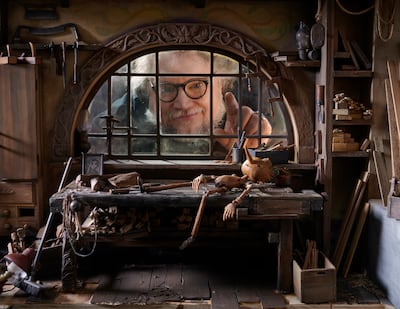
One slight concern for del Toro arose when it was announced that Robert Zemeckis's own Pinocchio film, starring Tom Hanks as Gepetto and heavily inspired by the Disney version, was actually going to be released only two months before his hit Netflix. It has since been received poor reviews. However, Robbins was never actually concerned about any comparisons.
“I've known Bob Zemeckis for a long time. When you see the movie that he made, in my opinion, he got thoroughly engrossed in what can be done technically. It’s a tour de force, in terms of the achievement of the marriage of live action, animation and CGI. But it isn't bringing anything new to the story.”
Ultimately, Robbins believes that his and del Toro’s Pinocchio is just that, as it explores finding “love and understanding in a corrupt world.” While that might sound a little saccharine, Robbins insists that the film is able to maximize these themes because it also isn’t “afraid of portraying things that are savage and brutal and unjust".
“It shows the love between a father and a son in a way that’s not as sugary, sweet, sentimental, and unmitigated as in other films or in greeting cards or in the more banal forms of other media. I hope audiences will appreciate how different it is, from what could have been familiar territory.”
Guillermo del Toro's Pinocchio is available to stream now on Netflix
